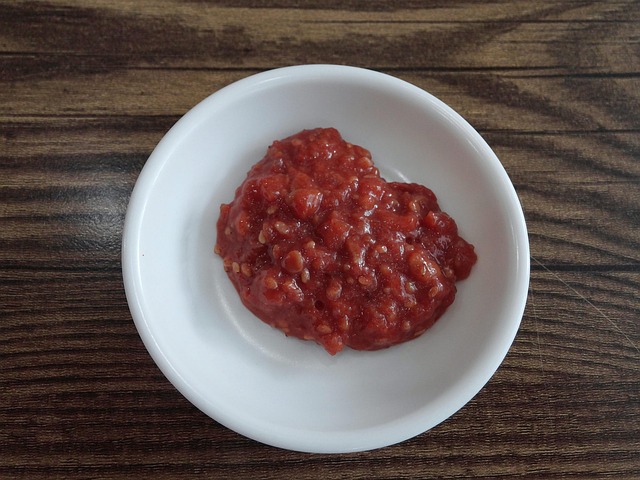**1. The Components of Ssamjang**
Ssamjang is a representative Korean sauce made by mixing various ingredients like garlic and onion with a base of doenjang (soybean paste) and gochujang (chili paste). Because it contains fermented foods and is eaten with vegetables, it’s easy to think of it as a healthy sauce.
**2. Why You Shouldn’t Eat a ‘Generous Amount’**
However, commercially available ssamjang or the kind served in restaurants contains more sugar, starch syrup, or high-fructose corn syrup than we might think, added to enhance the taste.
– **Added Sugars:** These simple sugars are the main culprits that directly and quickly raise blood sugar.
– **High Sodium:** The salt content of doenjang and gochujang is already high, making ssamjang a representative high-sodium sauce. Excessive sodium intake raises blood pressure, increasing the risk of diabetic complications.
– **Conclusion:** The habit of putting a ‘generous’ dollop of ssamjang on vegetables leads to the unintentional consumption of a significant amount of sugar and sodium.
**3. Enjoying Ssamjang Healthily**
– **Add Only a Small Amount:** Think of ssamjang only as a way to add flavor and consume only a small amount, such as by lightly dipping your food with chopsticks.
– **Make it Yourself:** You can enjoy it more healthily by making it at home, controlling the sweetness with blended onions or fruits instead of sugar or syrup, and using low-sodium doenjang.
– **Nut Ssamjang:** Mixing crushed nuts into the ssamjang can lower the sodium content and supplement with healthy fats.
Summary: Although delicious, ssamjang contains more sugar and sodium than you might expect. When eating ssamjang, people with diabetes should consume only a small amount for taste, instead of putting a generous amount on their vegetables.


Leave a Reply